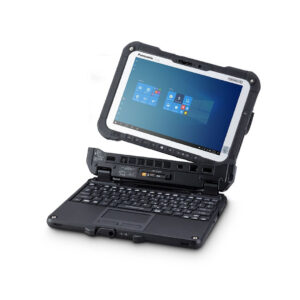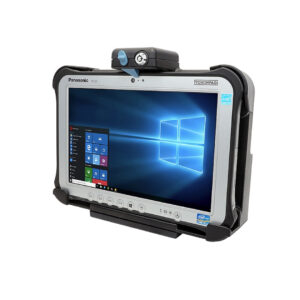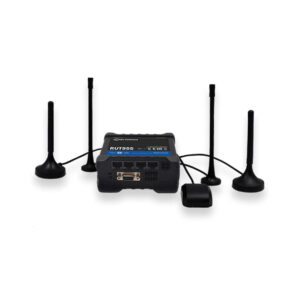
The world of ambulances is constantly evolving, adapting to the growing demands of technology as well as emergency services.
In this post, we will take a deep dive into the role of digital development and electronic devices of ambulances, with a particular focus on the Estonian Ambulance Service and its cooperation with local manufacturers.
 The Standards of Ambulance Technology
The Standards of Ambulance Technology
Ambulances must meet strict requirements laid down by decision-makers in Europe.
It is, of course, fully understood that an ambulance is not just another vehicle, or just a tool for working, it is an essential part of the emergency service workings.
As regular citizens we expect that an ambulance will always be available quickly in the event of a serious health issue, accident or any emergency that requires urgent assistance. Obviously, it’s the ambulance that plays a key role in the lifesaving.
This is why the construction of an ambulance is set by standards. From internal dimensions and load capacity to angular radii and work safety – it is the details that determine the efficiency and safety of ambulance operations.
Today there are two companies in Estonia that are capable of manufacturing compliant ambulances and Oliver from Supervivent is proud to partner with both companies!
 Partnership with Local Ambulance Manufacturers
Partnership with Local Ambulance Manufacturers
Partnership with local vehicle manufacturers plays an important part in the innovation of Estonian ambulance technology.
We will explore how these companies are committed to providing the best electronic devices, especially cutting-edge computers.
Martin Puusepp from Profile Vehicles says that constructing an ambulance is one of the most complicated of operational vehicles. “The demands are the highest and understandably so – this is explicitly a matter of human life and death. The standards are high and risk mitigation must be efficient. Everything and up to the driver’s seat has specific requirements. After all, the goal of an ambulance is to get information as quickly as possible and react promptly. Ideally, from the moment the PSAP receives a call the ambulance unit enters the vehicle, turns on the emergency lights and off they go. The GPS system immediately shows where to drive and how to get there, and doctors can deal with saving a person’s life. Though we might get bogged down from time to time in real-life situations, it’s up to us to minimize any risk and technology plays a key role in that.”
Pussepp clearly considers, so to speak run-of-the-mill computers, too risky for operational vehicles. “Frankly, with a normal computer we always run into a hundred problems. Be it the sun that’s too bright or the temperature that’s too low. I’m clearly a believer in rugged computers, because equipment in an ambulance has to be reliable in any situation – be it rain or snow, summer or winter, come hell or high water – saving a person’s life must not get bogged down in technical problems!”
“Ambulances are purchased by selection, not procurement. This is, of course the right way to do it, since for such a vehicle quality matters over money. These are demanding requirements, but this cooperation has created an almost perfect ambulance tech kit that takes into account the wishes and needs of all parties. All parties have been involved and I have to point out separately that Oliver has played a key role here. His extensive knowledge base, rapid response and, of course, exceptional solutions have made the whole process efficient from the start. Although it’s a tall order to find a technical solution to a situation where quick reaction times, access to sensitive data, accurate and most efficient driving instructions are required – and the equipment must not freeze or crash or lose battery power. Oliver is a really high-level partner in this regard and everything settles out effectively”, added Puusepp.
 Digitisation of Emergency Services
Digitisation of Emergency Services
We delve into the role of digital solutions in ambulance services that have contributed to increased operational efficiency.
We examine how modern computer systems, including cutting-edge rugged computers, have changed the response time of emergency medical services and the quality of patient care.
IT Manager of Tartu Ambulance Toomas Sarv appreciates modern technological solutions in ambulances on one hand as a huge gain and, on the other hand, sees that there is a lot of room for optimization in equipment and technology. “Compared to the time when there were no car computers at all, the response time has definitely become faster and operational services more efficient. At the same time, the ambulance is filled to the brim with equipment, so even a minor failure can affect the work of EMS workers. We come from a time of physical paper cards and waste in brain power and move on to a period where technology saves time and brain power. Right now, we’re halfway through, we’ve completed the first phase, we’ve learned our lessons and are moving on from here. More and more options are coming, but quick and effective patient care and the well-being of employees are the top priority. People are still the most important in the ambulance.”
Looking ahead, Sarv believes that in the future the equipment of ambulances could be more optimised: “At the moment, the ambulance is equipped with an extra battery to provide all the equipment with necessary power. That’s why I don’t think there’s need for more equipment in the vehicles. I do, however, look forward to the next software update to improve the medical record application even more and use the full potential of the new geo-information system to be introduced in the vehicle. In addition, the use of computers could become more convenient.”
Oliver keeps the focus in place to find the optimal solution between durable hardware, up-to-date software and the well-being of people.
Sarv believes that partners such as Supervivent are absolutely necessary for the ambulance: “Oliver keeps the focus in place to find the optimal solution between durable hardware, up-to-date software and the well-being of people. Separately, I would like to emphasise Oliver’s excellent ability to find solutions – there is no problem that gets him jammed or that he cannot provide a very good solution to quickly. It’s as if we’re in the same boat and have taken a single aim towards a better future from the very start. It’s clear that electronics, such as rugged computers in ambulances, have come to stay.”
Future Trends in Ambulance Technology
Let’s look into the future and envisage
Finally, let’s look into the future and envisage what the directions of ambulance technologies could be. Will electric cars and self-driving cars take over in the field of emergency services? How will energy storage solutions change and what role will innovation play in the next 10 years?
 Oliver Sults predicts the future like this:
Oliver Sults predicts the future like this:
In the next 10 years, technological developments in ambulances may involve a number of innovations. An increase in the spread of integrated wearable devices, augmented reality glasses, the introduction of AI and IoT systems and versatile all-in-one devices can be seen. By the end of the decade, biometric sensors, holographic interfaces and next-gen smart medical vehicles could have a significant impact on the operation of emergency medical services, providing advanced patient monitoring and remote consultations.
One thing is clear, however – reliable, functioning and durable technology is a fundamental prerequisite, not an exclusive special solution for saving lives.
The future will show whether and how big of a role exactly rugged computers will play in ambulances. One thing is clear, however – reliable, functioning and durable technology is a fundamental prerequisite, not an exclusive special solution for saving lives.
Related products
-
- 22%

Panasonic Toughbook G2
2 in 1 laptops, Laptops, Tablets, Vehicle terminalsOriginal price was: 3074.00€.2400.00€Current price is: 2400.00€. 1967.21€ 0% VAT -

Panasonic Toughpad FZ-G1/G2 Thin Docking Station, No RF
Vehicle terminals984.00€ 806.56€ 0% VAT -

Tööstuslik LTE Wifi Ruuter RUT955
Accessories264.00€ 216.39€ 0% VAT

 The Standards of Ambulance Technology
The Standards of Ambulance Technology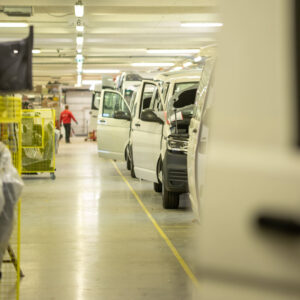 Partnership with Local Ambulance Manufacturers
Partnership with Local Ambulance Manufacturers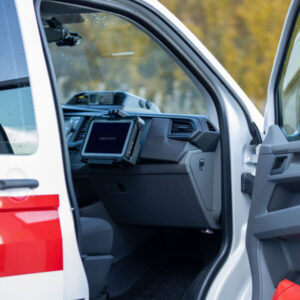 Digitisation of Emergency Services
Digitisation of Emergency Services Oliver Sults predicts the future like this:
Oliver Sults predicts the future like this: